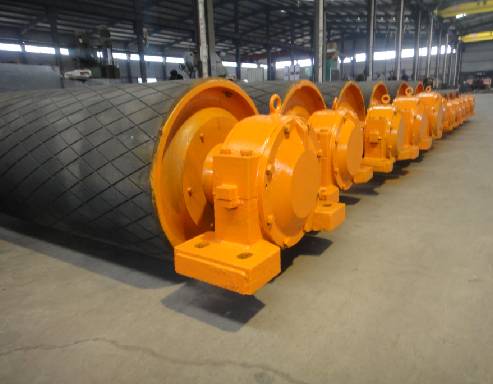 Afrikaans
Afrikaans  Albanian
Albanian  Amharic
Amharic  Arabic
Arabic  Armenian
Armenian  Azerbaijani
Azerbaijani  Basque
Basque  Belarusian
Belarusian  Bengali
Bengali  Bosnian
Bosnian  Bulgarian
Bulgarian  Catalan
Catalan  Cebuano
Cebuano  Corsican
Corsican  Croatian
Croatian  Czech
Czech  Danish
Danish  Dutch
Dutch  English
English  Esperanto
Esperanto  Estonian
Estonian  Finnish
Finnish  French
French  Frisian
Frisian  Galician
Galician  Georgian
Georgian  German
German  Greek
Greek  Gujarati
Gujarati  Haitian Creole
Haitian Creole  hausa
hausa  hawaiian
hawaiian  Hebrew
Hebrew  Hindi
Hindi  Miao
Miao  Hungarian
Hungarian  Icelandic
Icelandic  igbo
igbo  Indonesian
Indonesian  irish
irish  Italian
Italian  Japanese
Japanese  Javanese
Javanese  Kannada
Kannada  kazakh
kazakh  Khmer
Khmer  Rwandese
Rwandese  Korean
Korean  Kurdish
Kurdish  Kyrgyz
Kyrgyz  Lao
Lao  Latin
Latin  Latvian
Latvian  Lithuanian
Lithuanian  Luxembourgish
Luxembourgish  Macedonian
Macedonian  Malgashi
Malgashi  Malay
Malay  Malayalam
Malayalam  Maltese
Maltese  Maori
Maori  Marathi
Marathi  Mongolian
Mongolian  Myanmar
Myanmar  Nepali
Nepali  Norwegian
Norwegian  Norwegian
Norwegian  Occitan
Occitan  Pashto
Pashto  Persian
Persian  Polish
Polish  Portuguese
Portuguese  Punjabi
Punjabi  Romanian
Romanian  Russian
Russian  Samoan
Samoan  Scottish Gaelic
Scottish Gaelic  Serbian
Serbian  Sesotho
Sesotho  Shona
Shona  Sindhi
Sindhi  Sinhala
Sinhala  Slovak
Slovak  Slovenian
Slovenian  Somali
Somali  Spanish
Spanish  Sundanese
Sundanese  Swahili
Swahili  Swedish
Swedish  Tagalog
Tagalog  Tajik
Tajik  Tamil
Tamil  Tatar
Tatar  Telugu
Telugu  Thai
Thai  Turkish
Turkish  Turkmen
Turkmen  Ukrainian
Ukrainian  Urdu
Urdu  Uighur
Uighur  Uzbek
Uzbek  Vietnamese
Vietnamese  Welsh
Welsh  Bantu
Bantu  Yiddish
Yiddish  Yoruba
Yoruba  Zulu
Zulu conveyor pulley components
Understanding Conveyor Pulley Components
Conveyor pulleys are critical components in the functioning of conveyor systems, widely used in various industries such as mining, manufacturing, and logistics. These pulleys help facilitate the movement of materials and play a vital role in ensuring the efficiency and reliability of conveyor operations. In this article, we will delve into the essential components of conveyor pulleys and their significance.
Types of Conveyor Pulleys
Conveyor pulleys can be classified into several types based on their function and design
1. Drive Pulleys These are the primary pulleys responsible for driving the conveyor belt. They are connected to a motor that provides the necessary force for movement. Drive pulleys must be robust and durable to handle the high tension and loads often experienced within the system.
2. Idler Pulleys Idler pulleys support the belt and maintain its alignment throughout the conveyor path. They play a crucial role in ensuring that the belt runs smoothly and prevents it from sagging or misaligning. Idlers are typically non-powered and are used in various positions across the conveyor.
3. Tail Pulleys Located at the end of the conveyor, tail pulleys are essential for completing the circuit of the belt system. They facilitate the return of the belt to the drive pulley, allowing for continuous operation. Tail pulleys also provide tension to keep the belt snug against the idlers.
4. Snub Pulleys These pulleys are used to increase the angle of wrap of the belt around the drive pulley, enhancing friction and improving the grip. Snub pulleys are vital for ensuring optimal transfer of power from the drive to the belt.
Components of Conveyor Pulleys
conveyor pulley components

Each conveyor pulley consists of several key components, including
- Shell The outer drum of the pulley, typically made of steel, which provides the surface for the belt to move over. The shell's design affects the overall durability and performance of the pulley.
- Shaft The central rod that connects the pulley to the motor and other components. The shaft must be strong enough to withstand the loads and stresses placed upon it during operation.
- Bearings These support the pulley and allow for smooth rotation around the shaft. Proper bearing selection is crucial, as it affects the pulley’s efficiency, maintenance requirements, and lifespan.
- End Discs These components are welded to the ends of the shell and provide structural integrity. They help to hold the shell in place and prevent belt slippage.
- Lagging This is a rubber or ceramic cover that is applied to the surface of drive pulleys. Lagging increases the friction between the pulley and the belt, preventing slippage, especially in applications with heavy loads.
Conclusion
Conveyor pulleys are indispensable in the smooth operation of conveyor systems. Understanding the different types of pulleys and their components can aid industries in selecting the right equipment for their specific needs, leading to more efficient material handling processes. By investing in quality conveyor pulleys, businesses can improve productivity while minimizing downtime and maintenance costs.
-
Revolutionizing Conveyor Reliability with Advanced Rubber Lagging PulleysNewsJul.22,2025
-
Powering Precision and Durability with Expert Manufacturers of Conveyor ComponentsNewsJul.22,2025
-
Optimizing Conveyor Systems with Advanced Conveyor AccessoriesNewsJul.22,2025
-
Maximize Conveyor Efficiency with Quality Conveyor Idler PulleysNewsJul.22,2025
-
Future-Proof Your Conveyor System with High-Performance Polyurethane RollerNewsJul.22,2025
-
Driving Efficiency Forward with Quality Idlers and RollersNewsJul.22,2025





























